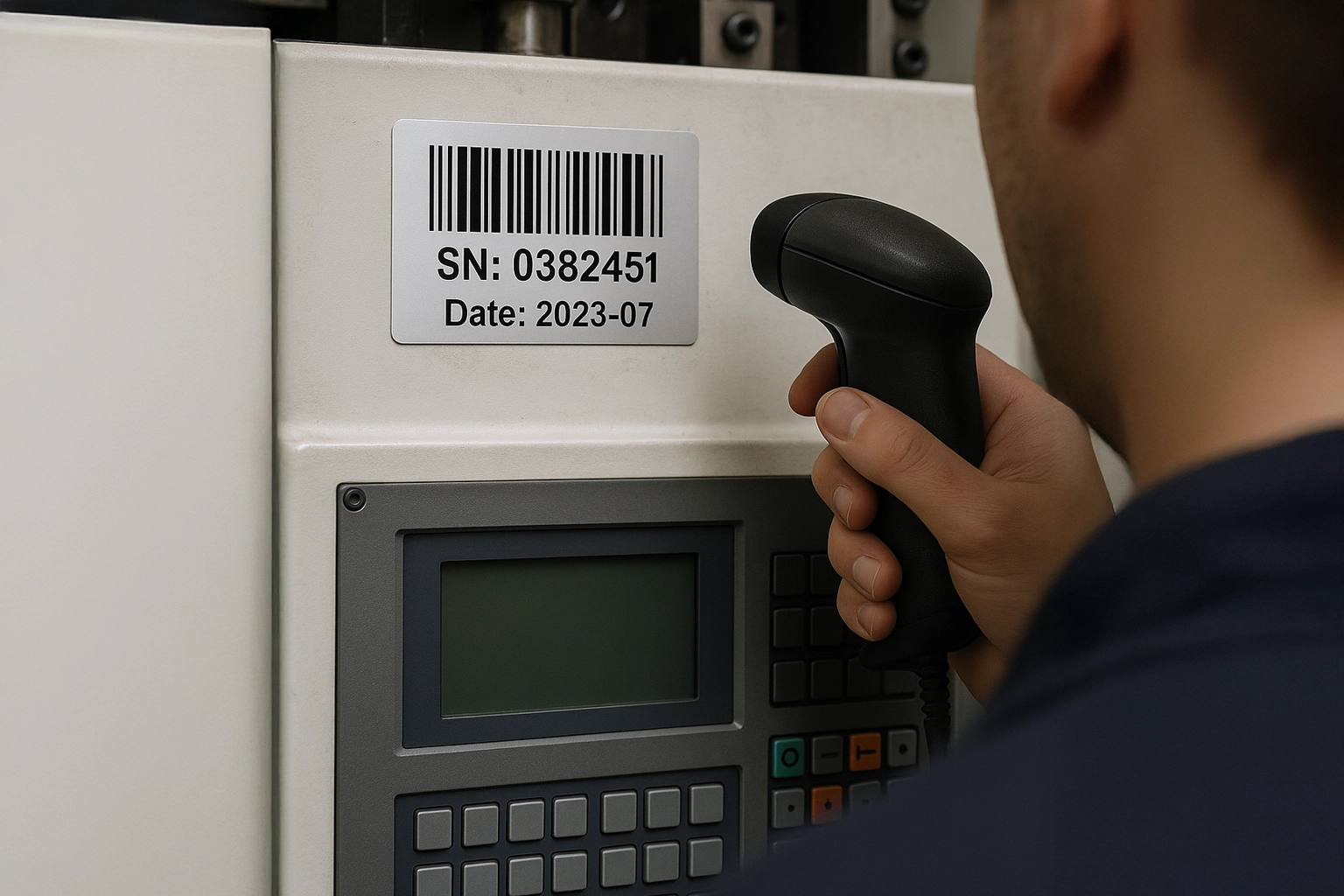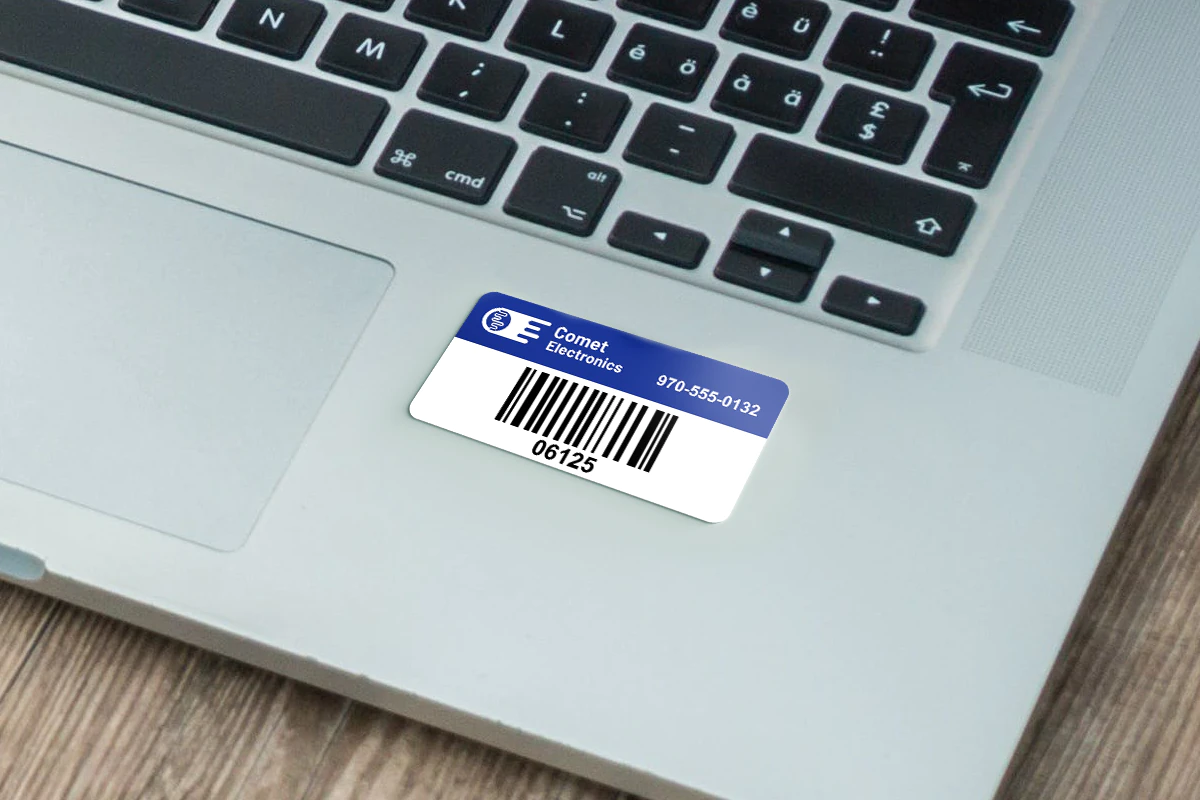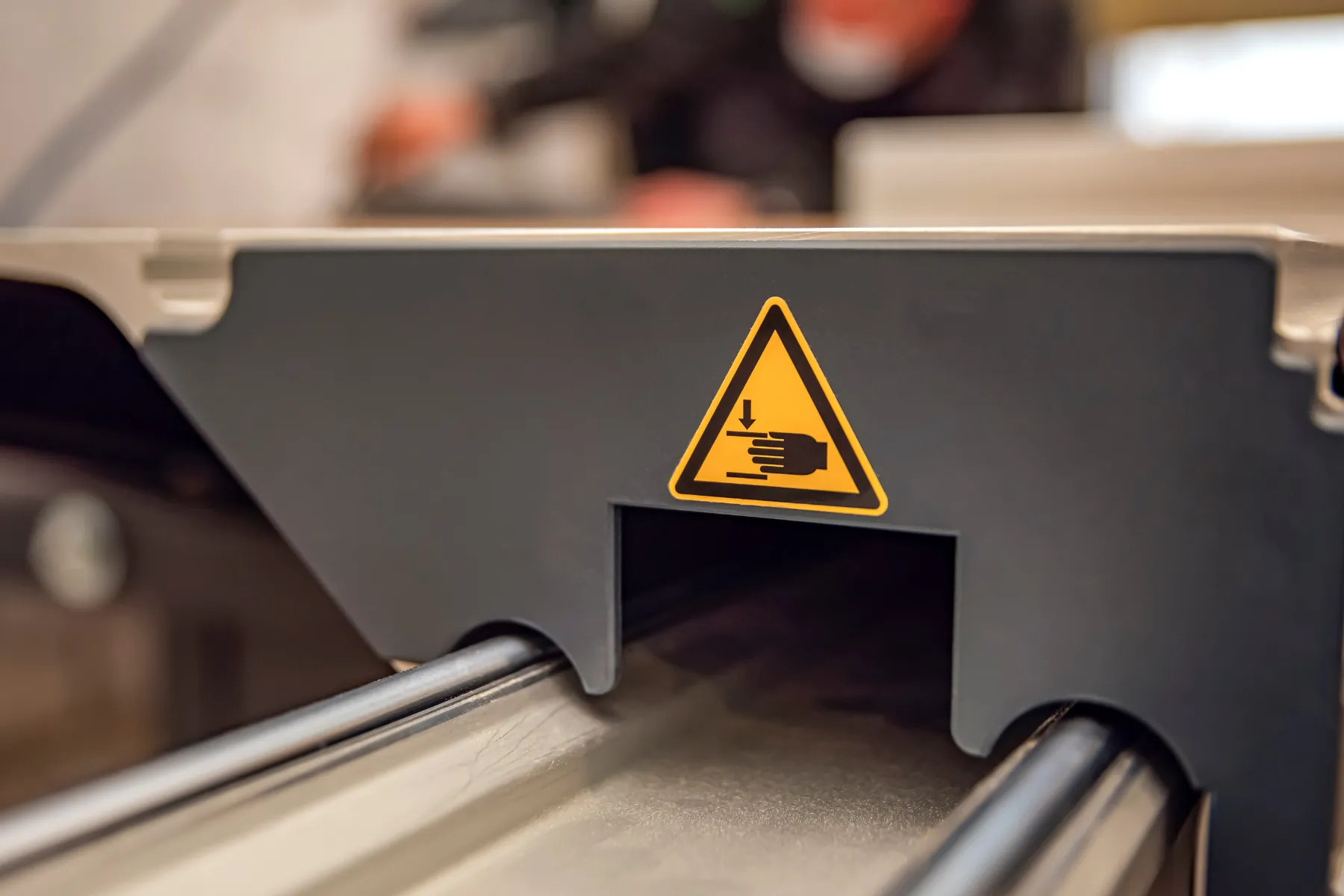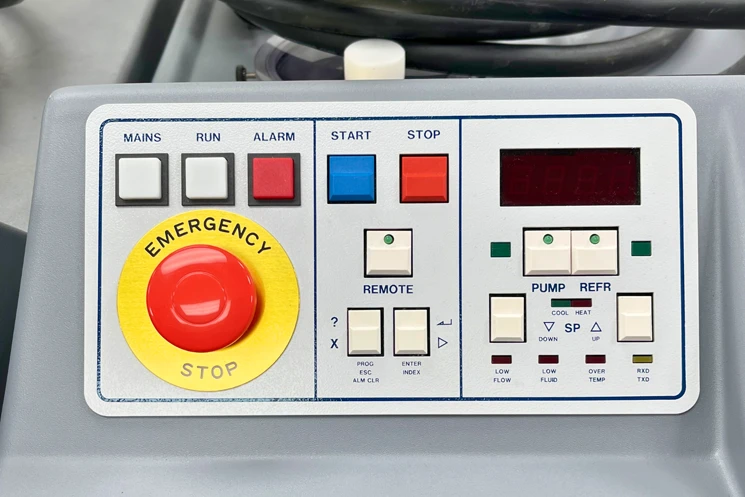A production number on a machine is a unique identifier used to track equipment across its manufacturing lifecycle. It supports everything from traceability and calibration to preventive maintenance and quality control.
For operations teams, labeling machines with the right manufacturing labels isn’t just best practice, it’s essential for compliance and efficiency.

What Is a Production Number?
A production number is typically assigned during manufacturing and stays with the machine throughout its operational life. It may be stamped into a metal nameplate, printed on a barcode label, or encoded in a serialized equipment tag.
Unlike a model number (which identifies the design) or a serial number (which identifies a single unit), a production number often reflects a specific batch, lot, or run in which the machine was made. This makes it especially useful for:
- Tracking equipment origin and configuration
- Identifying manufacturing variances or updates
- Supporting calibration scheduling and audits
- Maintaining records for service history
Why Production Numbers Matter in Manufacturing
In high-stakes environments like aerospace, automotive, and heavy industry, every part and machine must be traceable. A clear production number allows QA, engineering, and compliance teams to:
- Locate specific machines by batch, plant, or production date
- Match service history with exact production lineage
- Quickly identify affected units during recalls or upgrades
- Meet ISO, OSHA, and internal audit documentation requirements
According to NIST guidelines on industrial traceability, clearly labeled assets with unique identifiers reduce calibration error rates and improve lifecycle management.
Whether you’re managing ten machines or ten thousand, reliable labeling is key to avoiding downtime, failed audits, or incorrect servicing.
How to Label Machines for Traceability
To support production number tracking, durable labeling solutions are required. These must resist abrasion, heat, oil, and cleaning solvents while remaining legible and scannable. For long-term performance:
- Use metal nameplates for high-temperature or outdoor equipment
- Choose polyester or anodized aluminum labels for general industrial use
- Include barcodes or QR codes for quick digital access
- Always specify serialization options for unique machine IDs
If you’re labeling machines for traceability, serial number labels are one of the most reliable tools you can use. These labels provide a unique ID for each unit and are built to survive tough industrial environments.
Here’s what to look for in a good serial number label:
- Durable material that withstands abrasion, heat, and solvents
- Clear, legible printing for easy identification
- Barcodes or QR codes for fast scanning
- Strong adhesives that hold up on metal, plastic, or painted surfaces
- Tamper-evident options to protect against unauthorized removal
Serial number labels make it easy to keep service records accurate, confirm calibration targets, and pass audits without guesswork.

Calibration Season: Why Now Is the Time
Mid-year is a critical time for equipment audits and recalibrations. With many facilities conducting preventive maintenance during summer slowdowns, it’s the perfect window to:
- Validate all machine production numbers
- Replace faded or damaged labels
- Align records with current asset condition
- Simplify inspection with scannable serial tags
Missing or unreadable production numbers can stall inspections or lead to compliance issues. Now is the time to fix it.
Keep Operations Smooth with Better Labeling
Production numbers are more than just identification codes—they’re essential tools for maintaining equipment integrity, meeting audit requirements, and keeping your plant running efficiently. With the right manufacturing labels, you make that process easier, faster, and more reliable.
Quick Recap
Here’s a summary of what we covered:
- A production number identifies when and how a machine was made
- It supports audits, maintenance, and traceability across your operation
- Production numbers differ from serial numbers by grouping machines into batches
- Clear labeling improves compliance and reduces downtime
- Use metal, polyester, or barcode labels for long-term durability
- Mid-year is an ideal time to review and update machine labels
Why Production Numbers Matter on Machines FAQs
A production number is a unique code assigned during manufacturing to identify a machine’s batch or production run. It aids in traceability, maintenance, and audits.
While a serial number identifies an individual unit, a production number often refers to a group of machines made together, helping trace common configurations or issues.
Ideally, place the label on a clean, visible, and accessible area that won’t be exposed to excessive wear, heat, or chemicals.
Use metal or industrial-grade polyester labels with barcode or serialization options to ensure longevity and readability in harsh conditions.
Yes. You can retrofit machines with serialized labels to align with updated tracking systems or meet current audit requirements.
Include the production number, serial number (if separate), manufacturer name, date of production, and a barcode for scanning if needed.
They allow you to confirm that the correct machine is being calibrated and that service history is accurate, which is crucial for compliance and quality control.



